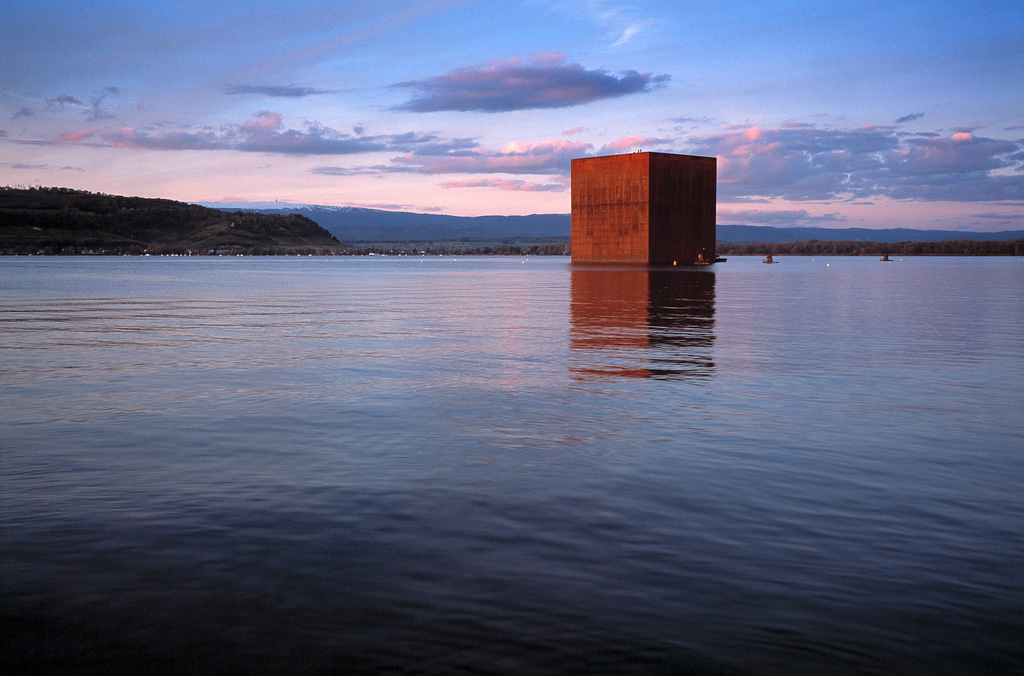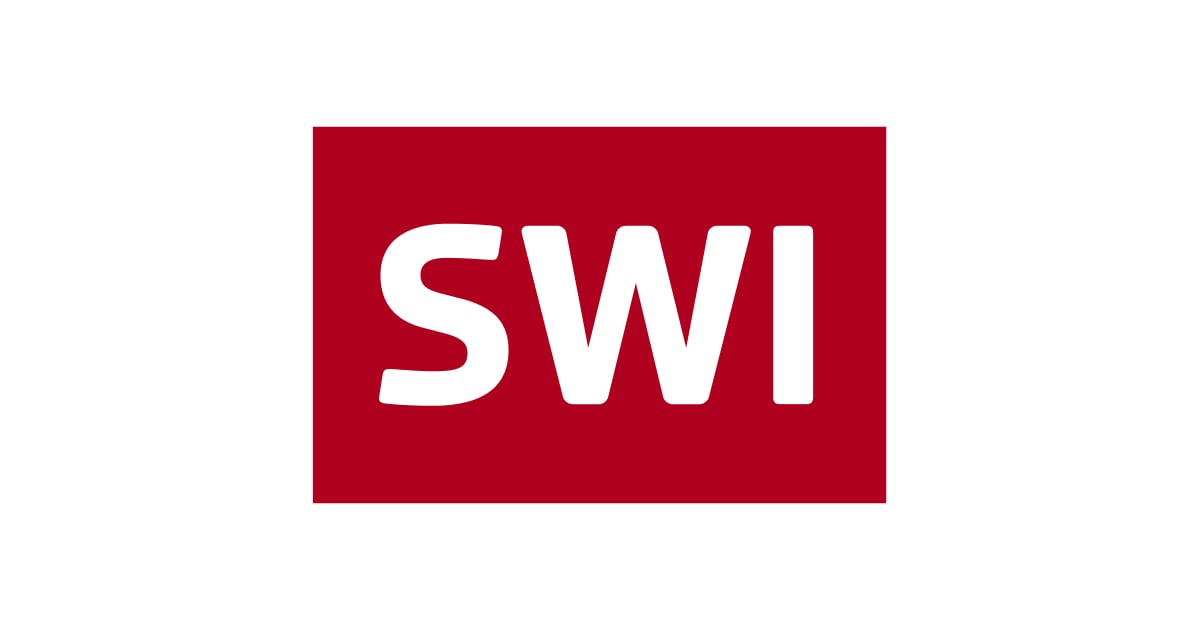National exhibitions cement Swiss identity

It was described variously as chaotic, delivery by forceps and finally a public success, but today nothing remains of Switzerland’s last national exhibition a decade ago - and thoughts are turning to the next one.
Expo.02 public centred around three of Switzerland’s major lakes: Neuchâtel, Murten and Biel. The towns that gave their names to those lakes, along with Yverdon further south, were the four sites that were home to the national exhibition for one long summer.
Today, cars occupy much of the space in Neuchâtel. Murten’s lakeside path is pristine. In Biel, stakeholders are fighting over what should be done with the remaining space while Yverdon has a park on the lakeshore.
So you would be hard-pressed to know what took place there ten years ago. The installations are long gone, although some benefits remained.
Murten ended up with a new railway station and more tourists, as did Neuchâtel and Biel. Yverdon on the other hand has seen visitor numbers drop.
Biel seems to have reaped the biggest benefits so far. The city managed to reach its goal of improving its image, its infrastructure and its political structure.
“Expo.02 allowed to rid ourselves of the image of a city in crisis,” says former mayor Hans Stöckli.
Thanks to the exhibition, a zone between the station and the lake has been redeveloped, erasing memories of an industrial no-man’s land. Today the area includes schools, a media centre and a retirement home, while a technical university will soon set up there.
“Without Expo.02, we wouldn’t have succeeded,” says Stöckli.
No footprint
The promoters of the exhibition wanted to show off a fun side to Switzerland, along with its talents for creation and innovation. This was also reflected in the architecture, which was both contemporary and unusual for the Swiss. For architect Benedikt Loderer, its aim wasn’t to influence construction in Switzerland.
“You build differently for an exhibition than you would something made to last,” he told swissinfo.ch
“You can try things you wouldn’t attempt with normal buildings, whether it be the form or the construction techniques. Formally it should and must be striking, while in terms of construction it takes less effort, as it doesn’t require elements such as insulation.”
From the beginning, it was clear that Expo.02 would not leave a footprint, requiring everything to be disassembled after it was over. That meant that even French architect Jean Nouvel’s rusty cube on Lake Murten had to go, as did Yverdon’s artificial cloud designed by New Yorkers Diller & Scofidio.
Swiss speciality
With nothing left to show, thoughts are already turning to the next national exhibition, 15 years away at best. Philosopher Georg Kohler says it will be needed.
“National exhibitions are a Swiss speciality,” says Kohler. “To some extent they are a snapshot of the country’s spiritual and intellectual state at a specific time, which is why Switzerland needs to reassure itself every 25 to 30 years.”
The country is a construction of different cultures, languages and geography, prompting the question of what the Swiss have in common with each other and what defines them as a nation given their fragile cultural identity.
It is a question that has been raised since the second half of the 19th century, when Switzerland became a federal state under a national constitution.
More recently, the fall of the Berlin Wall meant that Switzerland’s position of armed neutrality and siding with the West no longer had an ideological foundation, according to Kohler.
“National identity as we understood it between 1945 and 1990 wasn’t adapted to the new world order,” he told swissinfo.ch. “A national exhibition was necessary because Switzerland still hadn’t found its place in that emerging world.”
Cohesion
The desire to find some form of national cohesion was one of the driving forces Expo.02. In the early 1990s, parliament voted to hold an exhibition in 1998, the 150th anniversary of the constitution.
Shortly before, German-speaking voters had turned down a proposal to join the European Economic Area, unlike their French-speaking fellow citizens, Swissair had dumped long-haul flights from Geneva and canton Zurich had begun discussing the introduction at primary school of English as the second language instead of French.
Enough to lead to frictions along the French-German divide, the so-called ‘Röstigraben’ or ‘barrière des röstis’ depending on which side you stood.
The exhibition itself had plenty of teething problems. The opening date was put back a number of times, the management was replaced and the budget shortened.
But with more than 10.3 million visitors, it was considered a success. The media, who were critical at the outset, finally praised it as a fair reflection of the country and modern life, highlighting the spectacular architecture and the opportunities for French and German-speakers to meet.
Earlier national exhibitions had come in for criticism. The 1939 edition had also faced delays, partly because farmers were against it being held in “red” Zurich. It went down though as one of Switzerland’s most patriotic events.
Cost complaints
The next exhibition is expected to take place in eastern Switzerland around 2027, with cantons Appenzell Outer Rhodes, St Gallen and Thurgau working on a project to be presented by the end of the year.
Another project centred on the Gotthard and involving cantons Ticino, Valais, Uri and Graubünden is off the table. Marco Solari, president of Ticino tourism and who had been one of the project’s driving forces, told swissinfo.ch that diverging interests were to blame and some of the parties involved were also wary of larger initiatives.
Solari wanted the exhibition to coincide with the opening of the new Gotthard railway tunnel, a huge project with European ramifications.
“The tunnel has hardly been dug and the moaning and groaning has already begun,” he said. “The objections are that we have already spent billions on the project and there is nothing left for a celebration.”
“The Swiss aren’t visionaries. They prefer practical, pragmatic and smaller things.”
Solari is convinced that another national exhibition will be held if eastern Switzerland really wants to stage it.
“It would make sense,” he points out. “Coming together and making things happen at a time when people remain hidden behind their computers could be significant.”
Expo.02 was the sixth national exhibition and was held from May 15 to October 20, 2002, in the Three Lakes region of western Switzerland.
Thirty-nine exhibits and more than 13,500 events turned the area around Lakes Murten, Neuchâtel and Biel into the country’s cultural centre.
The exhibition was held on four different sites in Biel, Neuchâtel, Murten and Yverdon, plus a mobile waterborne site for canton Jura. All the infrastructure was temporary and taken down after Expo.02 ended.
The exhibition cost SFr1.6 billion ($1.73 billion) to stage and lost SFr690 million.
The organisers counted a total of 10.3 million entries, meaning many people visited more than once and that the exhibition also attracted foreign visitors.
Sixty-five per cent of visitors used public transport to reach the various sites, while the rest relied mostly on their cars.
Previous national exhibitions were held in Zurich (1883 and 1939), Geneva (1896), Bern (1914) and Lausanne (1964).
(Adapted from German by Scott Capper)

In compliance with the JTI standards
More: SWI swissinfo.ch certified by the Journalism Trust Initiative












You can find an overview of ongoing debates with our journalists here . Please join us!
If you want to start a conversation about a topic raised in this article or want to report factual errors, email us at english@swissinfo.ch.